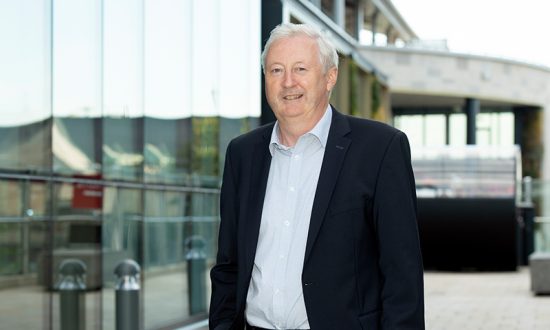Martin Curley is Professor of Innovation at Maynooth University and Director of Digital Transformation and Open Innovation at the Health Service Executive in Ireland. He is also chairman of the Irish Digital Health Leadership Steering Group, a grand coalition of clinicians, companies, academics, patients, and policy makers helping steer the Digital Transformation of the Irish Health Service. In 2022, Martin was recognized by four international business and health magazines as a top 10 global influential, impactful, and admirable health leader as well as a top 10 global inspiring educator.
Martin joined the HSE as Chief Information Officer (CIO) in 2018. Prior to joining the HSE Martin was Senior Vice President and group head for Global Digital Practice at Mastercard. Previously Martin was vice president at Intel Corporation and Director/GM of Intel Labs Europe, Intel’s network of more than 50 research labs which he helped grow across the European region. He also served as a senior principal engineer at Intel Labs Europe leading Intel’s research and innovation engagement with the European Commission and the broader European Union research ecosystem. Prior to this Curley was Global Director of IT Innovation and Director of IT Strategy and Technology at Intel. He also worked in research and management positions at GE in Ireland and Philips in the Netherlands. Martin was chair of the EU Open Innovation and Strategy Policy Group for seven years. He has co-authored eight books and is a member of the RIA and a fellow of BCS, ICS, IEI and IAE.
In an exclusive interview with Digital First Magazine, Dr. Martin Curley reveals some of the biggest barriers to and opportunities for healthcare innovations, the concept behind Open Innovation 2.0, his personal journey as a health tech innovator, career milestones, and a lot more. Following are the excerpts from the interview.
As an expert, what does digital transformation mean to you?
Digital Transformation is about coordinated digital change at scale across an organization but more importantly across an ecosystem. Digital is the catalyst, the fuel, raw material and glue that allows businesses and indeed industries to re-imagined, re-architected and re-engineered to deliver transformational solutions and productivity.
Digital Transformation involves taking a customer centric, digital first view of the world to create and enhance products and services, transform business models, operations, customer experience and productivity and indeed enable industry transformation.
We are on the tipping of a new age of frictionless business and services in a completely digital world. The simultaneous arrival of a number of disruptive technologies all at the same time are enabling a Cambrian explosion of solutions particularly in the area of Health. As we evolve open platforms and Application Programming Interfaces (APIs) will be the scaling engine of the digital economy.
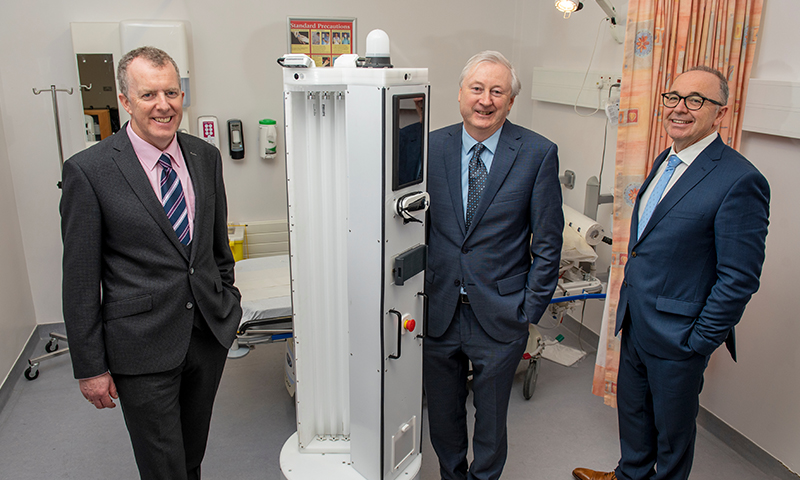
Anne Sheehan, GM of Microsoft Ireland talks about Digital Perseverance being critically important. As an Innovator and a Professor in Innovation I recognize that resistance and inertia for change are normal issues. Eric Topol, the famed cardiologist talks about Medicine being inherently resistant to change and there is a long history of the clinician body blocking innovations from leading edge clinician innovators. However, now the dynamic appears to be different with clinicians and patients all welcoming and desiring the digital ‘consumer’ experience that everybody enjoys in retail, banking, music and other industries. This time it appears to be pockets of administrators who are blocking the innovation
The traditional thinking is that Transformation is a long, eventful journey, demanding persistence over time, discontinuity in behavior, and frequent changes. The logic of Open Innovation 2.0 advocates that extraordinary rapid adoption can occur through the very low costs of production and distribution enabled by Digital, supplemented by solutions which are designed for immediate adoption. Larry Downes has written about ‘big bang adoption’ and we witnessed this during Covid when ‘necessity is the mother of invention’ meant that traditional barriers to adoption were dropped. Recently Dr Matt Mullarkey of the University of South Florida has made the case at the UNGA 77 Digital Health Symposium for why Digital Solutions can and should be binarily adopted.
What are some of the biggest opportunities and obstacles you see for innovation in the healthcare environment?
There are so many opportunities to transform healthcare through digital. The ability to instrument the body, to analyze and proactively predict, detect, and reverse chronic disease is such a huge opportunity and responsibility. In the USA Chronic disease accounts for 90% of all costs and about 70% of all deaths. For the first time in human history, we are developing the capability to provide real-time closed loop medicine with a focus on maintaining health and wellness. We are now entering the equivalent of the Californian Gold rush in healthcare.
Machiavelli said, “Entrepreneurs are simply those who understand that there is little difference between obstacle and opportunity and are able to turn both to their advantage”. Machiavelli also said ‘“Make no small plans for they have no power to stir the soul.” Thus, we need to think big, very big. Making healthcare accessible and affordable across the planet!
We are witnessing a massive Cambrian explosion of Digital Solutions into an industry which despite being very information intensive is at least a decade behind other industries in digitalization. Additionally, according to McKinsey, Healthcare despite being the single largest employment sector, actually incurred negative productivity growth in the decade between 2004 and 2015. There is such a huge need with repeated news stories about unsustainable budgets, full hospitals, long waiting lists and avoidable deaths. We as a global digital leadership and health community have an opportunity and an obligation to act. But we must act with coherence and cohesion. We must think big but start with some first small steps.
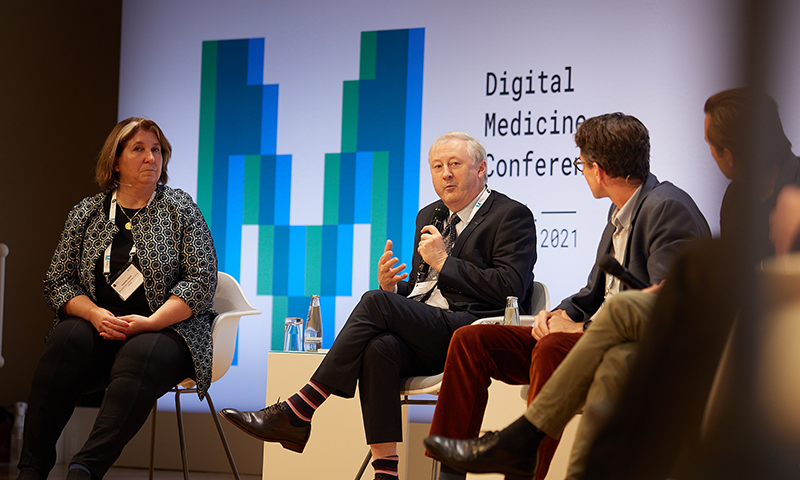
According to Nobel Prize winner Ilya Prigogine, “When a complex system is far from equilibrium, small islands of coherence in a sea of chaos have the capacity to shift the entire system to a higher order.” I have the privilege of working with a small group of global digital health leaders such as Ryl Jensen, Dave DeAngelis, Dr Charles Larkin, Dr John Sheehan, Gary Boyle, Dr Donal Bailey, Donal Morris, Osama Elhassan, Richard Jones, Prof Anthony Staines, and others who are trying to achieve this through alignment around a strategy called ‘Stay Left, Shift Left -10X” and the Open Innovation Methodology I developed. Shortly we will announce the Manhattan Manifesto a set of high-level guidelines for policy makers, clinicians, administrators, academics and other to help accelerate the digital transition of healthcare. We developed these at the UNGA 77 Science Summit Digital Health Symposium held in New York in September 22.
But we must change the posture and the culture of the health system. Resistance to innovation is the norm in some places. There is fear of risk and inertia. But there is much higher risk in not adopting these solutions – people will die unnecessarily when solutions are available, and these can be rapidly rolled out.
Can you brief us about your journey as a health tech innovator. What made you choose the healthcare industry?
I was privileged to have a fantastic career as a tech innovator with Intel and companies like GE, Philips and Mastercard. As a VP with Intel, Professor at Maynooth University and Chair of the EU Open Innovation Strategy and Policy group I was deeply immersed in the theory, policy, and practice of disruptive open innovation. As I practiced, research, discussed and observed disruptive innovation in practice I noted that there was an emergent phenomena of ‘Open Collaborative Ecosystems’ and I wrote a book on Open Innovation 2.0 with a colleague from the European Commission Bror Salmelin on the design patterns we built and shaped. The opportunity came along to compete to be the Chief Information Officer of the Health Service Executive and being aware of the digital lag in the health industry I volunteered to join. It has not been easy, in fact very difficult. I have rarely seen such committed employees as most of the clinicians I work with.
As Michael Porter of Harvard says ‘we have 21st century clinicians and equipment but Victorian style mindsets and management system in Health. In other industries you have the opportunity to change things but in health it is about saving and improving lives. What a privilege is that!
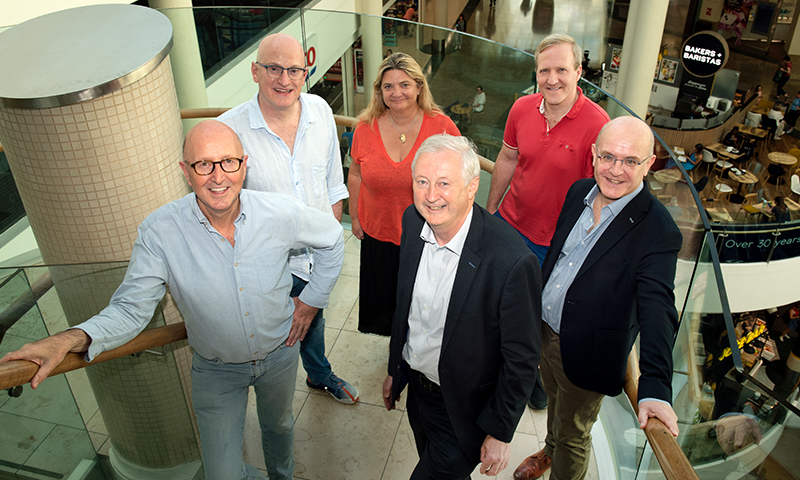
In your current role, how are you steering Health Service Executive’s digital transformation?
As the chair of the Irish Digital Health Leadership Steering group, I am driving a so called ‘Grand Coalition’ to help oversee the digital transition of our healthcare system. I have the privilege of working with leaders such as John Shaw, Jim Joyce, Dr John Sheehan, Eoin O’Reilly, Prof Richard Costello, Mr. Michael Sugrue, Dr Donal Bailey, Donal Morris, Susan Treacy, Prof Anthony Staines, and many others to actually achieve a revolution in healthcare in Ireland. As Director of HSE Digital Transformation I lead and manage the implementation of our National Digital Healthcare strategy through our living lab network. As a Professor in Innovation, I try to bring leading innovation thinking, techniques, and tactics to the transformation of our healthcare system.
We are using the OI2 Living Lab methodology to help introduce disruptive change in a way that is non-threatening and has a high rate of success. I work with my colleagues Jim McGrane, Des O’Toole, and others to manage innovation governance and the innovation pipeline to as speedily as possible move disruptive digital solutions through a living lab process.
There are four phases in our living lab process – exploration, proof of concept, demonstrator, and the broad adoption. Normal success rates of Digital Transformation are 30% but we are seeing much higher rates of success.
You helped create an innovation methodology called as Open Innovation 2.0. Can you please tell us about the concept behind it and what makes it unique?
Open Innovation is a new Innovation Paradigm and Methodology based on principles of high trust, intensive networking, value co-creation, use of digital technologies to deliver transformational solutions and value. Open Innovation 2.O (OI2) is a new paradigm based on principles of integrated collaboration, co-created shared value, cultivated innovation ecosystems, unleashed exponential technologies, and rapid adoption, often accelerated by an innovation method based on prototyping and experimentation in real world. At the core of OI2 is the concept of shared vision/value and the quadruple helix innovation model where government, industry, academia, and citizens/users aligned around a common shared vision, underpinned by shared values can drive structural improvements far greater than any one organization could achieve on their own through collaborative innovation. Cultivating and orchestrating an ecosystem, which leverages a common innovation platform allowing co-creation and deep user involvement and innovation, is crucial to successful results. At the core of OI2 is an Open Collaborative Ecosystem (OCE) and the use of an OCE is a Fundamental Mutation in the competitive landscapes.
OI2 consist of six core design patterns. A design pattern is a generally reusable solution to a commonly recurring problem. These patterns include Industrializing innovation, Design for Adoption, Data Driven Innovation, Industrializing the Innovation Process, Agile Development, Ecosystem Orchestration and Management. In a mature OCE Data Driven Innovation is the most powerful design pattern – already global trade in data services has grown exponentially and according to the World Bank now constitutes all half of trade in services.
In Ireland I have helped nurture and orchestrate a health OCE with a particular focus on Digital Health SMEs. Just three years ago the HSE had perhaps a handful of Digital Health SMEs, now it has an ecosystem of over 35 companies who are viewed as partners rather than suppliers. These companies’ offerings are being integrated into an emergent platform.
Ireland is lucky to have a particularly vibrant set of female digital health leaders including Sonia Neary, Nicola Maxwell, Ade Stack, Lucy Nugent, Karen Kelly, Una Kearns, Anne Shortt, Antoinette Doherty and many others. All of these leaders subscribe to the OI2 principles and absolutely walk the talk.
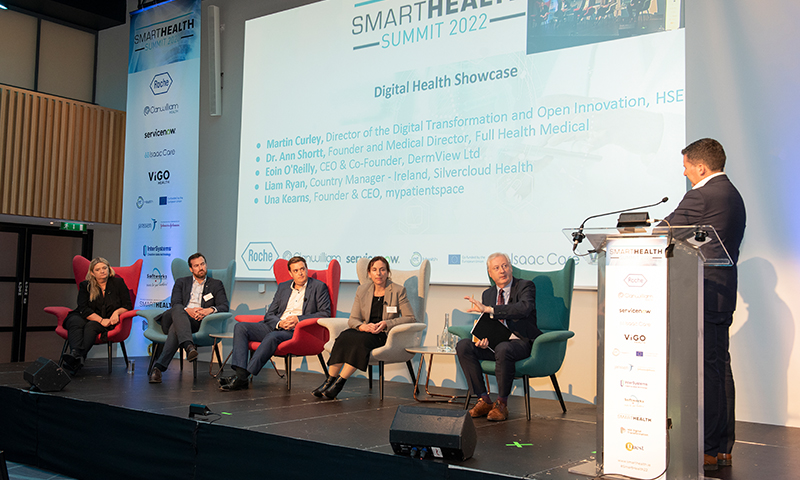
According to you, what sets Ireland’s digital healthcare ecosystem apart from other markets?
Well first let’s be grounded – Ireland is coming from a very considerable position of being behind in Health. Despite being one of the largest spenders per capita, Ireland’s health system is ranked a very lowly 80th position. However, this lowly position also provides a springboard to leapfrog to a whole new kind of digital health system. Ireland has a very fast digital improvement trajectory, but the health system is undergoing a culture war; innovation versus status quo.
There are five key things that set Ireland’s ecosystem apart
- First a committed body of clinicians who are open and ambitious for the adoption of digital health solutions
- Secondly a unique ecosystem of Digital Health SME’s, the crème of which we call the First 25
- Thirdly a unique ecosystem of global digital, MedTech and pharma companies present in Ireland
- Fourthly what Harvard Business Review calls a grand coalition approach through the Irish Digital Health Leadership Steering Group (IDHLSG) whereby over 70 citizen and professional leaders are overseeing the digital transition and the fight against vested interests.
- Fifthly Ireland already does Digital very well, ranking number 5 in the European Digital Economy and Society Index, but not in Health. That is now the opportunity.
As a Leading Digital Health Innovator, what are your plans for the next 5 years?
Together with attendees from the UNGA 77 Digital Health Symposium we will shortly announce the Manhattan Manifesto which will provide guidance to global stakeholders about how to align, amplify and accelerate the digital transition to healthcare. We will work with a global network of collaborators to help improve health equity, access, and affordability to citizens of the world. There is a unique opportunity through ‘Curleys Law’ to deliver 10 times or 10X better care, coverage, affordability, and outcomes for citizens of the planet. Curley’s Law as called out by the InsightsCare magazine is the phenomenon that Digital technologies applied to Healthcare (an information intensive industry) using an exponential innovation methodology leads to 10X (10 times) outcomes – faster, cheaper, better, higher volume etc.). We have the ability to create a massive ‘Open Collaborative Ecosystem’ (OCE) which will drive accelerated development, deployment and benefits from distributed, integrated digital health solutions.
The goldrush in Digital health will open up many opportunities so personally I am not sure of the next step for me. Sun Tzu said in the Art of War ‘Opportunities multiply as they are seized’ and I have always lived by that maxim. I want to avoid nasty people and continue to have impact working with a collaborative ecosystem. As I refer to below, Eckhart Tolle says ‘When you become comfortable with uncertainty, infinite possibilities open up in your life’. Let’s see what happens!
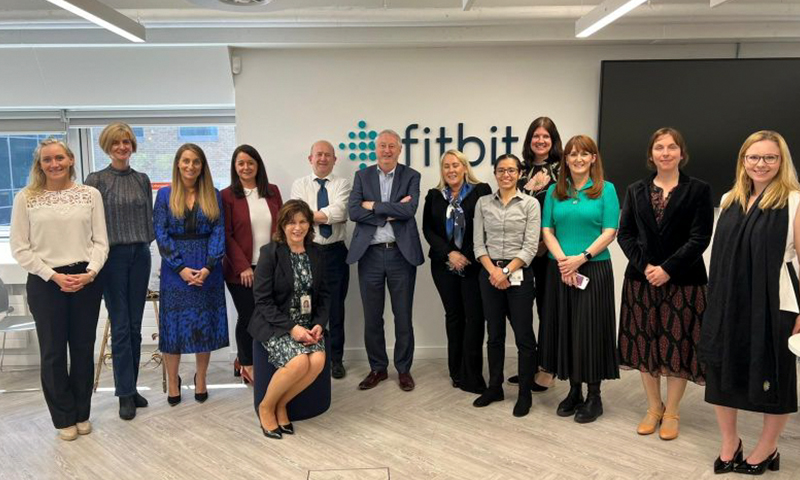
What are some of your proudest achievements in career till date? What makes them special?
I am especially proud of the key solutions HSE Digital Transformation delivered in direct response to Covid – examples include
- Together with Eamonn Costello of PatientMPower we had a remote monitoring solution for Covid 19 available within a week of Covid arriving on Irish shores.
- Similarly with Myles Murray of PMD and Prof Richard Costello of RCSI we had deployed the novel respirasense technology in the first week into Covid and it provided up to 12 hours’ notice of a patient desaturating.
- Together with Redzinc and CEO Donal Morris we had developed and deployed a telehealth solution into St James Hospital and Irish Mental Health Services week before solutions such as Zoom, and Teams were deployed.
- Together with Eileen Byrne CEO of Clanwilliam, Fintan Foy of the ICGP and several others we implemented ePrescribing in a matter of weeks and this has been described as one of the biggest changes in Irish Healthcare in several decades.
- Together with Dr Roisin Molloy of Trimedika we introduced over 10,000 non-contact infrared thermometer across the Irish health Service to reduce infection risk and improve productivity.
In 2020 HSE Digital Transformation received the Mind the Bridge/ICC Global Public Sector Innovation award recognizing our innovative work with start-ups which culminated in us being able to announce the First25, the top twenty-five digital health SMEs in Ireland that are collaborating with HSE Digital Transformation. Collaborating with CEOs such as Jim Joyce (Healthbeacon), Dermot Shortt (FullHealth Medical), Eoin O’Reilly (Dermview)Ade Stack (Stack’s Pharmacies), John Carroll (Careplus) and many others have been a real privilege.
The establishment of a new Masters in Digital Health Transformation with academic leaders such as Annette McElligott, and Professors Anthony Staines, David Prendergast, Pam Hussey, Ciara Heavin, Martin O’Halloran and many others is a significant accomplishment. Education is the first step to transformation and to date over 100 Irish Clinicians have taken the Masters and over fifty digital change projects have been delivered.
I was delighted in 2022 that three different international Health and Business Magazines recognized me as a top 10 global influential, impactful and admirable Health leader respectively. This external recognition is helpful as it proves that my and my teams work is recognized as valuable despite resistance that might be received from some pockets in the Irish Health Service.
You have had an amazing career trajectory so far as a health tech innovator with numerous awards and recognitions added to your name. What is the secret sauce to your success?
Samuel Goldwyn said, ‘The harder I work, the luckier I get’. Vision, Hard work, relationships, resilience are critical elements of success and never being complacent. Having a compelling vision means that teammates commit to rather than comply with the vision. Innovation is a team sport, and I am lucky to have such brilliant and committed colleagues such as Jim McGrane, Des O’Toole, Nora Heavey and others. HSE Digital Transformation is modelled on the US Marines ethic – Semper Fidelis. We all have each other’s backs.
JMJ Associates based in Chicago coined the term ‘Relationships are the Foundation of all Accomplishment’ and I have placed this principle at the centre of my modus operandi. Karl Erik Sveiby said ‘Trust is the Bandwidth of Communication’ and the establishment of high trust warm relationships are at the core of a high performing organization and ecosystem. Say what you are going to do and then do what you say!

Resilience is hugely importance as if you are a disruptor then people will take shots at you. A chance meeting with world boxing champion Tyson Fury in Belfast led to Fury sharing his secret that ‘punches to the back of the head stun you but don’t hurt you. Once your nervous system recovers you can fight on’. Thus take the blows, get back up again, and use them as motivation to redouble your efforts. Being relentless in pursuit of a vision or goal means no matter what way the wind is blowing, or the tide is flowing you will get to your destination.
Adoption of a Scrum mindset is also critical – Innovation is a team sport. At the core of Scrum are some fundamental principles such as Empirical Process Control, Self-Organization and Value Based Prioritization which when applied correctly allow you to do twice the work in halt the time according to Scrum inventor Jeff Sutherland. The use of Stay Left, Shift Left 10X as a way of prioritizing projects in a diverse portfolio allows the highest impact project to prioritized and progressed. Empirical Process control involving three key factors Transparency, Inspection and Adaptation is so key to accelerated collective forward progress.
My favorite Intel value is ‘Win and Have Fun’. I try to live by this every day.
In your opinion, what is the single most important change that will better enable digital transformation in healthcare systems?
Copernican shifts around Leadership, culture, and technology adoption, but particularly culture. It is about having courage, confidence, and conviction. We need to change healthcare culture to orient towards change rather than resist it. Organizational culture is a system of shared assumptions, values, and beliefs, which governs how people behave in organizations. We have got to reduce or eliminate fear of innovation.
The Roman Philosopher Tacticus said “the desire for safety stands against every great and noble enterprise”. There appears to be such a fear and a resistance to change in healthcare, above and beyond other industries. One reason is that Healthcare systems are already so stressed that they have limited headroom or absorptive capacity. We are witnessing a Cambrian like explosion of innovative Digital Health Solutions and yet some health system appears impenetrable to change.
The use of Living Labs in the OI2 methodology offers hope in that it allows the introduction of disruptive digital health solutions in a gradual non-threatening way with clinicians and patients alike as co-innovators.
According to famous aviator Anne Morrow Lindbergh “Only in growth, reform, and change, paradoxically enough is true security to be found. Eckhart Tolle says ‘When you become comfortable with uncertainty, infinite possibilities open up in your life’ – the same applies to healthcare organizations. He adds “When fear is no longer a dominant factor in what you do, it no longer prevents you from taking action to initiate change’. Imagine the possibilities and the lives than can be saved if we collectively open up to the amazing suite of digital health solutions which are emerging.






